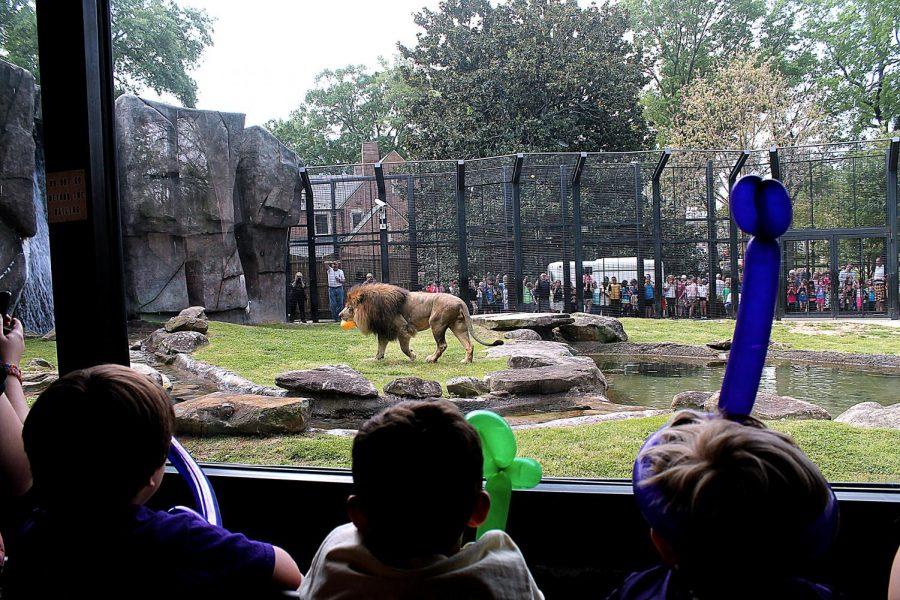Meet the lions who call campus home
June 3, 2016
Leo III and Una greet students and visitors each day on campus in a habitat built just for them.
They celebrate two birthdays a year, one in April and another in November, said appointed caretaker Anne Howard.
“We order four toys a year — two for their official birthday and two for their real birthday,” Howard said.
Leo and Una celebrated their 14th birthday in April.
The festivities include speeches from campus officials, toys for the lions and attendance from children from local schools, Howard said.
“At the end of the speeches, (the children) sing happy birthday,” Howard said. “Then they call Leo and Una, and when they call Leo and Una I let them out.”
The lions are the symbols of the university, said junior Casey Wright.
“Whenever you think of UNA, you think (of) Leo and Una,” Wright said.
Leo and Una are unique because they are live mascots, said alumna Ariel Drew.
“It’s fun to tell people, ‘Yeah, my school has a live lion habitat on campus’ and see their eyes bulge,” Drew said. “We’re pretty awesome.”
Howard raised Leo and Una. They lived in her living room for three months before transitioning to their home on campus, the George H. Carroll Lion Habitat, Howard said.
“Raising a lion is no different from raising a dog, cat or baby,” Howard said. “It takes love and patience. They were like children — sleep an hour, up two hours, sleep an hour, up two hours.”
The transition was gradual. The cubs would spend the mornings on campus and the nights at home so they would not feel lonely, Howard said.
“Their first full night on campus, I cried,” Howard said.
When they were born, Leo weighed only two pounds, and Una weighed one pound at the Greenville Wildlife Park in New Hampshire. They were the third generation of captive-bred lions at Greenville, Howard said.
At six weeks old, they flew to Alabama and met Howard, she said.
The two bounded out of the pet carrier and ran to her, Howard said.
“It was love at first sight,” she said. “They were two little fur balls. But then I was devastated.
“They both ran up to me and peed on me. Leo on my right leg and Una on my left. I thought they didn’t like me.”
Howard learned the truth at their first checkup. The two cubs, who used to rely on her to bottle feed them and care for them like a mother, marked her as their territory, she said.
Howard was in charge of feeding them, washing them and playing with them. She became their mother and became part of Leo’s pride, she said.
If Leo is worried or misses Howard, he will roar for her to come outside.
“I’ll hear him roar, and then he’ll poke his head inside and look at me like, ‘Didn’t you hear me?’” she said.
Despite Leo and Una being the pride of the university, they are still Howard’s bundles of joy, even if they are twice her size, Howard said.
She travels with them to the university’s sporting events and keeps a watchful eye on them through the surveillance cameras. Being on campus early will give you the chance to see Leo and Una active and playing, she said.
Like smaller cats, they love lounging in the sun and being lazy, but they are very active in the morning, Howard said.
“They still have hearts, and they still have minds,” Howard said. “They are intelligent and full of love. They should be respected.”
Leo and Una make UNA unique, said sophomore Allison Tucker.
“I think it’s really cool that we recognize (Leo and Una),” Tucker said. “No other campus has live (lion) mascots.”
These mascots are special because they are unique to this area, said junior Alexander Bowling.
“It’s just an uncommon animal to have,” Bowling said.
Editors Note: News Editor Kaitlyn Davis contributed to this story.












